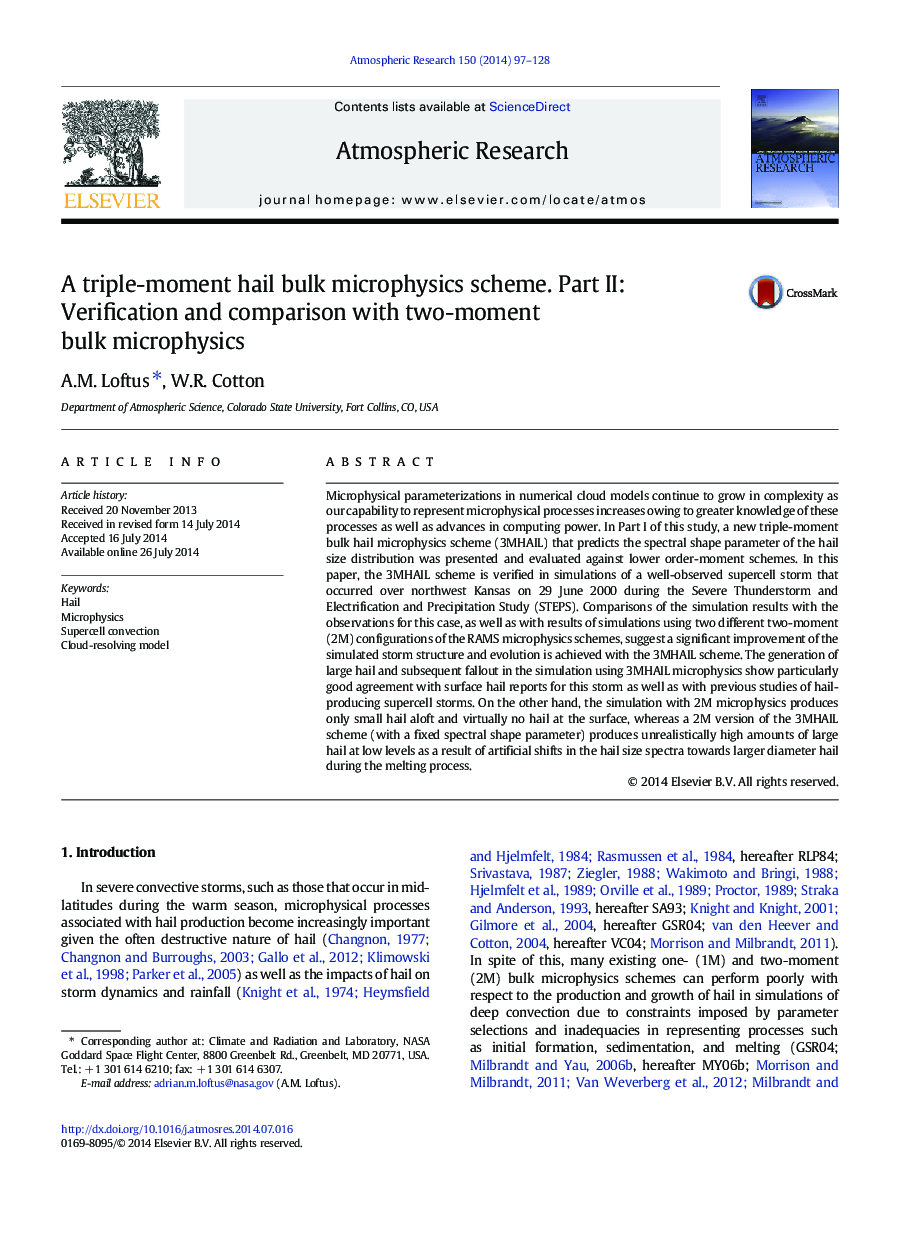| Article ID | Journal | Published Year | Pages | File Type |
|---|---|---|---|---|
| 4449818 | Atmospheric Research | 2014 | 32 Pages |
•We simulate supercell storms using 3MHAIL and 2M bulk microphysics schemes.•Simulations using 3MHAIL reproduce observed storm characteristics well.•Simulations with 2M schemes produce either small or unrealistically large hail.•Hail contributions to surface rainfall can be substantial in supercells.
Microphysical parameterizations in numerical cloud models continue to grow in complexity as our capability to represent microphysical processes increases owing to greater knowledge of these processes as well as advances in computing power. In Part I of this study, a new triple-moment bulk hail microphysics scheme (3MHAIL) that predicts the spectral shape parameter of the hail size distribution was presented and evaluated against lower order-moment schemes. In this paper, the 3MHAIL scheme is verified in simulations of a well-observed supercell storm that occurred over northwest Kansas on 29 June 2000 during the Severe Thunderstorm and Electrification and Precipitation Study (STEPS). Comparisons of the simulation results with the observations for this case, as well as with results of simulations using two different two-moment (2M) configurations of the RAMS microphysics schemes, suggest a significant improvement of the simulated storm structure and evolution is achieved with the 3MHAIL scheme. The generation of large hail and subsequent fallout in the simulation using 3MHAIL microphysics show particularly good agreement with surface hail reports for this storm as well as with previous studies of hail-producing supercell storms. On the other hand, the simulation with 2M microphysics produces only small hail aloft and virtually no hail at the surface, whereas a 2M version of the 3MHAIL scheme (with a fixed spectral shape parameter) produces unrealistically high amounts of large hail at low levels as a result of artificial shifts in the hail size spectra towards larger diameter hail during the melting process.
